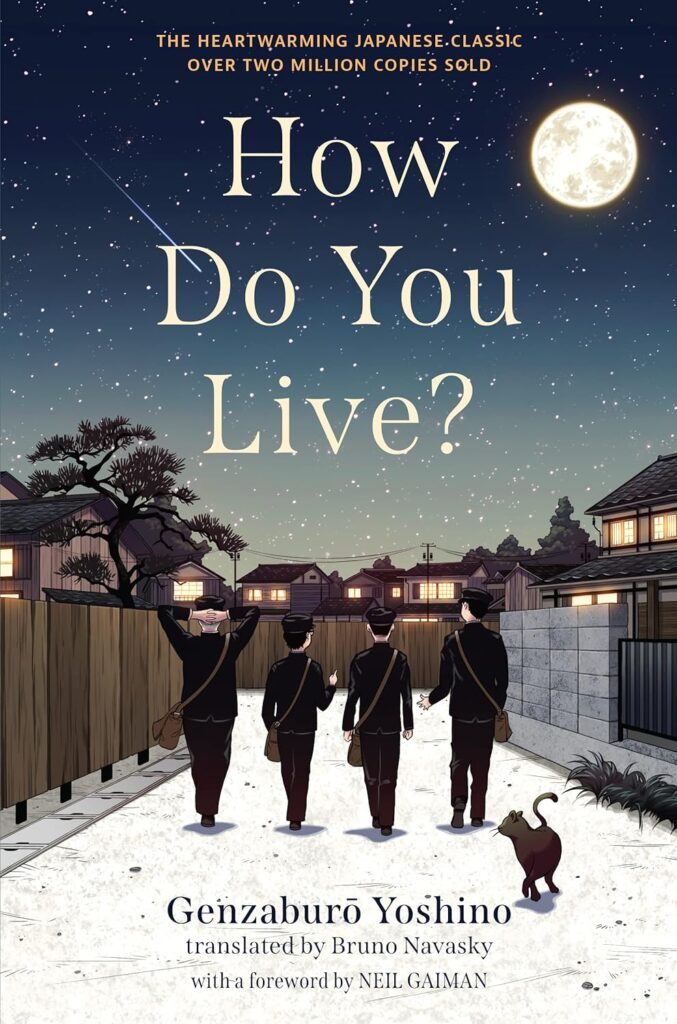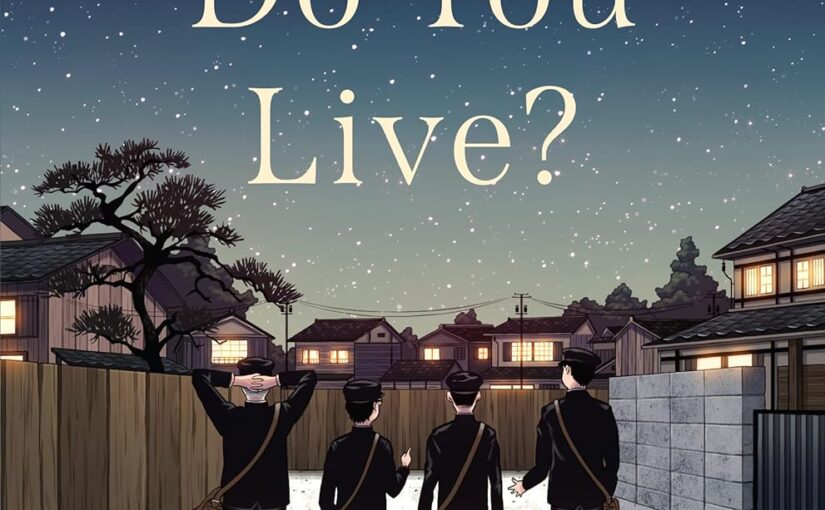After reading How Do You Live? you understand the book’s title on a much deeper level. On the surface one could surmise that How Do You Live? is a reflective book encouraging readers to take stock in their lives. It does have elements of that, but it’s not a personality Rorschach Test. Instead, How Do You Live? is one of the most popular Japanese books ever and has been a children’s book staple for generations. It’s scheduled to be the final anime film from Hayao Miyazaki and Studio Ghibli and was initially published in Japan in 1937. It’s also a very intelligent book that encourages thinking, introspection, and observations on various aspects of world culture. From an American teacher’s perspective, How Do You Live? is the book that you want your middle and high school students to read, but you know that less than 5% of them dig into the book for leisure reading, but more on that in a moment.

How Do You Live? is the story of a 15-year-old Japanese youth named Cooper. Cooper is his self-given name, he’s a typical Japanese youth with three good friends who all have similar differences and struggles as any high school kid anywhere.
There’s a timeless innocence to How Do You Live? that translates this Japanese 1930s era-based story to any country or time period. It’s as refreshing as watching classic Journey concert footage from the 1980s when cell phones weren’t automatically associated with our open palms. Were it not for the absence of mobile devices and video games, the lessons and parables in the book could’ve been published last year and nobody would’ve batted an eye. Even with those technological absences, the book crackles with an energy, passion and curiosity that easily rewards those readers who want to follow this road less traveled.
The chapters in the book have a fascinating, and initially frustrating presentation. The first part of a chapter is a traditional story that shows Cooper growing up, going to school, and interacting with others. The second part of each chapter has a different font, higher reading level, and is entitled “Uncle’s Notebook”, and then a topic for what Cooper’s uncle is writing about. The latter parts of the chapters are the wisdom and philosophical offerings that an older, caring guardian would offer a younger family member.
There are some instances where the narrative requires that two chapters in a row are from the more traditional viewpoint. That’s a great thing because there are some periods of the story that build to such a high point of tension that you want to read how they’re resolved. In those cases, establishing the tension immediately followed by the uncle’s wisdom would’ve made readers skim over his comments too quickly. The pacing of the book is great in the way that it knows exactly when to let readers know more about the character’s journey in the story, and when a sager observation from his uncle would carry more weight.
Younger readers might be opposed to the uncle’s chapters at first. His words are that of a teacher or parent who’s always correct in what they’re saying. To those potentially frustrated readers, I would simply encourage them to think of the book as entertainment, and not a self-help book that’s digging into their lives.
This is where the timeless, relatable elements of t How Do You Live? rear their head again. The book was written a long time ago in an island nation that people won’t visit, but they should…., yet the situations that these youth find themselves are ones that today’s kids know too. The group of boys all attend a private school that costs more money than public school, but even within those four, there are elements of jealousy, poverty, and envy. There’s a time when one kid is getting bullied, and one of his friends hides, despite the pact that they made together. The coward’s inaction haunts him for a long period of the book, affecting his health and grades.
Again, left to their own devices, mglit or high school audiences, probably wouldn’t seek out a translated book about bullying, guilt, or how philosophical questions can benefit our daily lives. How Do You Live? is a very smart book, but it’s not too smart to where high school audiences won’t be able to read it, understand it, enjoy it, and relate to it. This is an intelligent book that rewards those audiences who give the book the time that it needs. Those older audiences might wonder about the politics surrounding WWII and don’t want them permeating a book that might influence young readers. This is a worry that doesn’t even need to be considered. There’s nothing close to propaganda in How Do You Live?, it takes the high road, rewarding readers with a story that crackles with life so vividly that you’ll think the smell of tofu will be wafting in any moment.
How Do You Live? is by Genzaburo Yoshino, translated by Bruno Navasky and is available on Algonquin Young Readers, an imprint of Workman Publishing Co, Inc, a subsidiary of Hachette Book Group.
There are affiliate links in this post.





 Facebook
Facebook Twitter
Twitter Flickr
Flickr GooglePlus
GooglePlus Youtube
Youtube